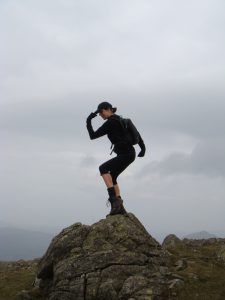In a volatile world the successful species are those who can evolve fast enough to continue thriving in a changing environment.
Beside the long age of earth our own species is still very young. The human primate has evolved in a short space of time, through the merit of adaptability, to become the planet’s most creative and most destructive inhabitant.
We now stand erect on hind legs, balancing our large-brained heads, able to manually grip by virtue of long, opposing thumbs.
At peak, we humans are astounding. But looking around at each other now…
How well is our species? Are we thriving?
The protection lent by footwear and clothing has revolutionised what humans can do.
But not being barefoot, and over-reliance on the support of shoes, has robbed the feet of their natural spring-power and strength.
Too much walking on hard, flat, urban floors has left us less able to cope with mixed outdoor terrain.
Gravity keeps us rooted to the fast-spinning planet. Its force pulls us down whilst we then spring upwards like plants into sunlight. But this beneficial, grounding force does not always seem good; the head may feel a heavy burden for the upright spine, the body a weight to be dragged around. And with too much chronic strain life is not lived so well.
At such times, how one thinks, breathes and moves simply gets in the way of the natural well self.
Living bones are light, but when rightly used can have the strength of reinforced concrete.
One’s weight is easily borne when fit and well.
Bones do not just resist vertical pressure well – they actually benefit from it.
Shock-absorbing discs between spinal vertebrae help counter compression.
We are tallest in the mornings after a night’s rest, becoming shorter through the day.
Moisture loss from discs over the course of the day shortens the spine. A night’s rest gives time for thirsty discs to reabsorb this moisture.
Splendid rich movement in the course of the day gives additional restoration, plumping the discs up again.
Variety of movement and adequate rest reflect the ease or unease we then have in standing for any length of time.
A well, able-bodied person can easily balance, with effortless poise, the head’s weight on the top of the spine.
The spine’s curves are a spring for bouncing back – but with too much hardship in life these curves can develop too much or too little to give adequate support.
Without the spring in our step we are no longer able to absorb the shock of anything more than restricted basic movements.
How well we are becomes apparent when just standing still.
Our phenomenal body-mind can feel vibrant and vital, grounded but weightless, flexible and strong.
The spine is our tower of strength. When it isn’t, our freedom has gone.
Kit Hartley. Lidgett. May 2017


